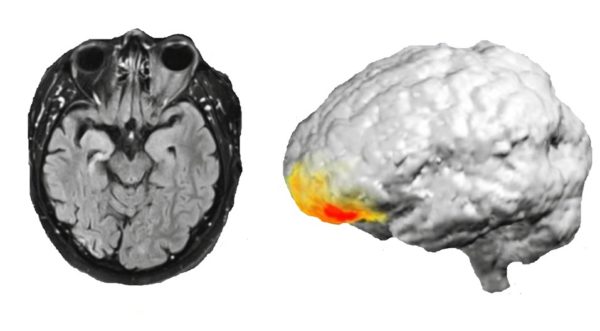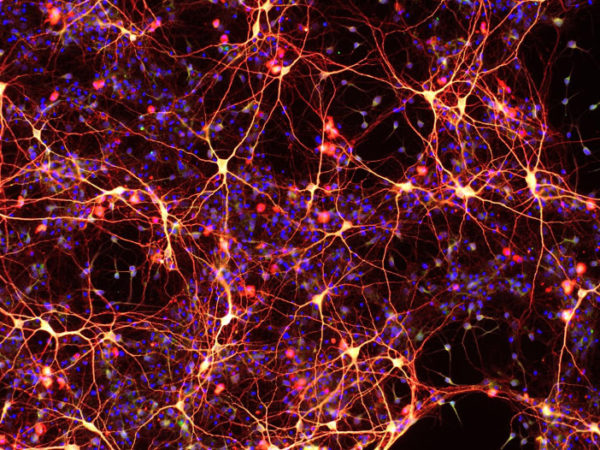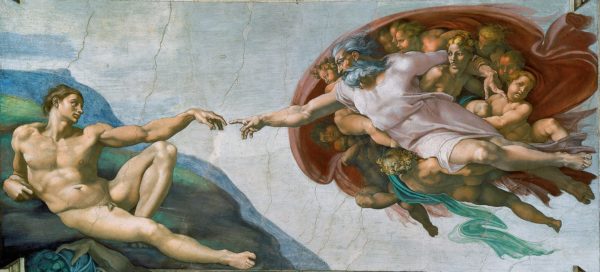Religion and science don’t often mix. But in the case of religious experiences — bright lights, booming voices, visions of God, angels, devils or other religious figures — scientists found a surprising overlap in a recent case study.
Researchers from Hadassah University Hospital in Jerusalem examined a 45-year-old male epilepsy patient back in May. The patient has temporal lobe epilepsy, a type of epilepsy with seizures involving intense “feelings, emotions, thoughts, and experiences” and even “hallucinations of voices, music, people, smells, or tastes” according to the Epilepsy Foundation.
The episodes had afflicted the patient since he was seven and relapsed at 23. He came to the hospital seeking relief and stopped taking his medication for the tests.
The doctors put him into an electroencephalogram (EEG) scanner to observe his brain patterns. As they were watching, he saw God.
Doctors Shahar Arzy and Roey Schurr wrote what happened next in the neurological journal Epilepsy and Behavior:
“While lying in bed, the patient abruptly ‘froze’ and stared at the ceiling for several minutes, stating later that he felt that God was approaching him. He then started chanting prayers quietly, looked for his Kippa and put it on his head, chanting the prayers more excessively. Then, abruptly, he yelled ‘And you are Adonai (name of the Hebrew God) the Lord!’ stating later that God had revealed to him, ordering him to bring redemption to the people of Israel.” (source)
After that, the patient ripped the EEG electrodes off and ran through hospital, telling whoever he found “God has sent me to you.”
He didn’t have a specific plan for accomplishing his newfound mission, but he was “sure that God is going to instruct him what he and his followers should do on their way to redemption.”
The patient was not a religious man. He was a factory worker with ‘low-level’ education who practiced religious rituals regularly, “as is common in his surrounding society, without any special religious involvement, deep religious feelings, or scholarly interest,” the study reports.
The researchers gave him an anti-psychotic medication and the episode ended a few hours later.
The episode was surprising, but had scientific precedent. Religious experiences like the one this patient had have long been documented in epilepsy patients, but the exact location underlying the neural mechanisms causing them were unclear until now.
THIS patient’s experience gave them clues.
They found an increase in activity in the low-gamma band (30–40 Hz) brain waves in the left prefrontal cortex of the patient’s brain suggesting that this could be the key to unveiling what all religious episodes have in common.
After making tests on hundreds religious people while praying, meditating or ‘speaking in tongues’ scientists made a surprising discovery!
It turns out that the prefrontal cortex, the part of the brain responsible for concentration, attention and focus, plays a major role in religious experiences. When the person reported seeing God the left prefrontal cortex activated.
This is interesting considering that scientists discovered the ‘Self’ is associated with the right frontal lobe. (source)
Whenever we lose the sense of Self the frontal lobe shuts (decreases activity) while other parts of the brain become more active. However, when someone is getting a vision of God only the left part of the prefrontal cortex activates.
So the Self and God could most likely live as ‘neighbors’ in our brain’s prefrontal cortex.
But how do science and psychology explain this?
The key could lie inside our hearts. Literally!

Recent research shocked a lot of scientists when they discovered that the heart has almost 40,000 neurons (which is a lot less than the brain). However, the real shocker was the discovery that the heart sends signals to the brain that are not only understood but obeyed by it. (source)
This means that even though the heart has a lot less neurons than the brain it most likely controls what the brain will think, or at least plays a major role.
Tests done on the subjects showed that the heart appeared to receive the intuitive information before the brain. This could be the basis of saying ‘Follow you heart and you will never go wrong!’
It also might prove something really cool:

Both the Self and God might live as one inside our hearts. All religions might come from the deepest levels of our unconscious mind existing as a defense mechanism for us to thrive.
Psychologists claim that at the deepest levels of our psyche lies the unconscious mind (the closest thing to our Soul). So in order to simplify the complexity and mystery of The Universe we were born into, our psyche separated the purest part of ourselves as something separate from us so we can have a guide. This is what we call God.
What represents God to us can be different for everyone else based on what their mind can associate this pureness with. However, because most people perceive this reality in a similar way the representation of God slightly differs. This is how they explain the incredible similarity across religions.
In the case where the patient had an epileptic episode claiming that he ‘saw God’ and that ‘God ordered him to bring redemption to the people of Israel’ could be that the patient revealed to himself what he knew deeply in his heart, at the very depths of his unconscious mind. It could be something that he felt a purpose of doing only he was unable to process it with the brain because of various psychological factors. So the only way his heart could have reached him was through the vision of God in his left prefrontal cortex.
God gave him the confidence of accepting this quest. This could be the case of many religious missions. And this could explain why so many religions are distorted from their real purpose once accepted by people who blindly study the ‘tip of the iceberg’ instead of the root cause at the depths of each religion.
And if you try to study, each religion comes from a single purpose, love. We can safely assume that everything you do out of love could most likely be a foundation of a new religion by itself.
So what’s the connection here?

Spirituality is unveiling of the layers of our psyche in an individual way, while religions use established methods and rituals.
It is interesting to see how closely that kind of religious experience is to an epileptic seizure. Here’s an anonymous patient testimony from the Epilepsy Foundation’s site:
“I get the strangest feeling, most of it can’t be put into words. The whole world suddenly seems more real at first. It’s as though everything becomes crystal clear. Then I feel as if I’m here but not here, kind of like being in a dream. It’s as if I’ve lived through this exact moment many times before. I hear what people say, but they don’t make sense. I know not to talk during the episode, since I just say foolish things. Sometimes I think I’m talking but later people tell me that I didn’t say anything. The whole thing lasts a minute or two.” (source)
When this happens the patent loses the sense of Self.
Seeing deeper into this we can unlock a powerful truth: We are beyond the Self.
We don’t need the Self to be, but the Self is a powerful part of ourselves that help us thrive in this reality.
This discovery can explain the link between religions, between God and the self, between spirituality and religion.
Anyway, it’s still a mystery, maybe even a bigger one, where does our Soul come from. Are we guided by a God from the deepest layers of our Soul, or are we the ones who create it? Is there a consciousness existing separate from our brains or is the activity of our brains what creates it? Or maybe, both of these statements are somehow true.
Sources:
– Big Think;
– http://www.nariphaltan.org;
– http://www.psych.utoronto.ca;






